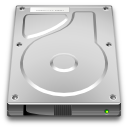Explanation of RAID Configurations for Dedicated Servers

RAID configurations are one of the primary reasons for businesses selecting dedicated server hosting over other high-uptime options that are available, namely eNlight India Cloud Hosting and VPS hosting. ESDS offers a range of dedicated servers that can be adapted to suit your needs as you wish and we offer a range of hard drive options that you can use to develop a RAID solution for your dedicated server.
RAID 0
This is one of the most popular RAID configurations available and is seen as a way of boosting the performance of disks in a server by combining 2 or more physical hard drives into a single logical disk, therefore combining the read/write speeds of all disks and splitting the data evenly across the disk array. It should be noted that in a RAID 0 array, the disks contained within the array needn’t necessarily be the same model or even the same logical size; however, the disk space that can be contributed to the array by each physical disk will be limited by the total size of the smallest disk in the array.
Compared to other RAID applications available, RAID 0 is one of the best performing solutions available; even though there is no additional data security offered, this can be achieved using other solutions such as backup applications that can back up your data to an external server located off-site. It should be noted that the performance of any RAID configuration is going to be dependent on the controller that has been used to create the array, with on-board controllers that are built into motherboards being less effective and reliable than dedicated RAID controllers that can be found in the form of PCI-E cards.
RAID 1
This has been designed to provide additional security for the data that you have stored on your dedicated server because the data that is stored on one disk is mirrored onto a second hard drive, with the intention being that if the primary hard drive fails then there is a secondary hard drive available containing an exact copy of the data contained on the failed drive. RAID 1 can also improve the performance of your server by increasing the read speeds at which data is accessed because the server will have two locations from which it can access the necessary.
RAID 1 is ideal for situations where data security and integrity are essential because it means that even if you do experience hardware failure with one of your hard disks, this won’t knock your dedicated server offline completely; once you have replaced the failed disk, it is fairly easy to rebuild the array without causing any further issues. However, ESDS to advise that you also invest in other methods to keep your data safe such as off-site backup because there have been occurrences where both hard drives have failed or a server has been destroyed.
RAID 5
Whereas RAID 0 and RAID 1 require two identical drives, RAID 5 requires 3 identical drives to function as intended. It seen as being a cost effective method to achieving high read figures without compromising the reliability of the data contained within the array since this is distributed throughout the array. Even though the write speeds that you will see with a RAID 5 array won’t be amazing, you should be looking to use this in scenarios that are more heaily read-orientated, such as databases that are powering the CMS systems for websites that receive high volumes of traffic.
RAID 10/1+0
RAID 1+0 (often referred to as RAID 10) is a combination of RAID 1 and RAID 0 meaning that it will be able to provide the ultimate in performance and data security. A RAID 10 array will require four identical drives to make sure that the array can function correctly; the drives are then separated into pairs to create two separate RAID 1 arrays, with these two arrays then being combined using RAID 0 to create a single high-performance volume. The data that is placed into a RAID 10 array will be spread across all the hard drives in the array meaning that access is going to be needed to all drives when reading them, therefore meaning that the read power of all the drives is going to be combined which will mean faster processing times for your data when retrieving it.
Although this can be a more costly configuration to setup, it is by far the best performing solution available to businesses that can afford it. Useful applications for this may include file servers where information is going to be constantly requested or in situations where disk performance and reliability are on par with each other in terms of the need for them.
